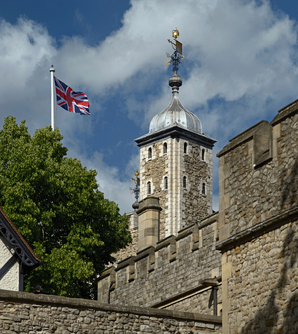The Tower of London, a symbol of royal power and security, has witnessed numerous audacious prison escapes throughout its history. From medieval bishops to Jacobite rebels, many prisoners have defied the Tower’s formidable defenses, using ingenuity, deception, and sometimes sheer luck to regain their freedom. These escapes have become legendary, adding to the Tower’s mystique and revealing the resourcefulness of those who dared to challenge its walls.
Who Was the First Person to Escape from the Tower of London?

The honor of being the first recorded escapee from the Tower of London goes to Ranulf Flambard, the Bishop of Durham. His daring escape in 1101 set the stage for centuries of breakout attempts:
- Date: February 2, 1101
- Method: Wine-induced guard distraction and rope descent
- Outcome: Successful escape to Normandy
Flambard’s escape was as cunning as it was simple:
- He organized a wine-tasting event for his guards.
- Once the guards were intoxicated, he retrieved a rope hidden in a wine casket.
- Using the rope, he abseiled down the Tower walls.
- He then scaled the curtain wall and fled on a waiting horse.
This escape not only demonstrated Flambard’s resourcefulness but also exposed early weaknesses in the Tower’s security protocols.
What Were Some of the Most Ingenious Escape Methods?

Over the centuries, prisoners devised various creative methods to break free from the Tower. Here are some of the most ingenious:
1. The Cross-Dressing Earl
- Escapee: The Earl of Nithsdale
- Year: 1716
- Method: Disguised as a woman
The Earl of Nithsdale, facing execution for his role in the Jacobite uprising, escaped by donning women’s clothing. His wife and two female accomplices dressed him in layers of petticoats and applied makeup to his face. The disguise was so convincing that he walked past the guards undetected.
2. The Jesuit Priest’s Rooftop Adventure
- Escapee: John Gerard
- Year: 1597
- Method: Roof access and rope descent
Despite being tortured and having severely damaged hands, John Gerard managed a spectacular escape:
- He and fellow prisoner John Arden removed stones around the door bolt to access the roof.
- Using a weighted thread to pull up a rope, they descended from the Cradle Tower.
- They were aided by a waiting boat on the Thames.
3. The Straw Mannequin Deception
- Escapee: Edmund Neville
- Year: 1585-1610
- Method: Straw decoy and disguise
After two failed attempts, Neville finally succeeded by:
- Creating a straw mannequin to place in his bed.
- Disguising himself as a blacksmith.
- Walking out of the Tower unnoticed.
How Did These Escapes Impact the Tower’s Security?
Each successful escape led to increased security measures and scrutiny:
- Enhanced Guard Training: Guards were given stricter protocols for prisoner interaction.
- Improved Physical Barriers: Weak points in the Tower’s structure were reinforced.
- Stricter Visitor Policies: Visitor access and items brought into the Tower were more closely monitored.
- Increased Surveillance: More frequent checks on prisoners were implemented.
Despite these improvements, the Tower’s reputation as an impregnable fortress was somewhat tarnished by each successful escape.
What Were the Consequences for Failed Escape Attempts?
Failed escape attempts often resulted in severe consequences:
| Consequence | Description |
|---|---|
| Execution | Some failed escapees faced immediate execution |
| Torture | Interrogation methods were used to extract information about accomplices |
| Solitary Confinement | Stricter isolation was imposed on those who attempted escape |
| Loss of Privileges | Any special treatment or comforts were revoked |
These harsh punishments served as deterrents for other prisoners contemplating escape.
How Did the Tower of London’s Role as a Prison Evolve?
The Tower’s function as a prison evolved over time:
- Early Years: Initially used for high-profile political prisoners
- Medieval Period: Expanded to include religious dissidents and foreign captives
- Tudor Era: Became a primary holding facility for those accused of treason
- 17th-19th Centuries: Used less frequently as a prison, but still held notable captives
- World Wars: Briefly revived as a place of internment for spies and prisoners of war
This evolution reflects changing political landscapes and the Tower’s symbolic importance in English history.
What Legacy Have These Escapes Left on the Tower of London?
The legacy of these escapes is multifaceted:
- Historical Intrigue: They add to the rich tapestry of stories associated with the Tower.
- Security Advancements: Each escape prompted improvements in prison security.
- Cultural Impact: These tales have inspired literature, films, and historical reenactments.
- Tourism Draw: The stories of daring escapes continue to fascinate visitors to the Tower.
Today, the Tower of London stands not only as a monument to royal power but also as a testament to the human spirit’s resilience and ingenuity in the face of confinement.
References:
1. https://www.youtube.com/watch?v=p27Z2qZ2_0I
2. https://www.hrp.org.uk/tower-of-london/history-and-stories/tower-of-london-prison/
3. https://londonist.com/london/history/did-anyone-ever-escape-from-the-tower-of-london
